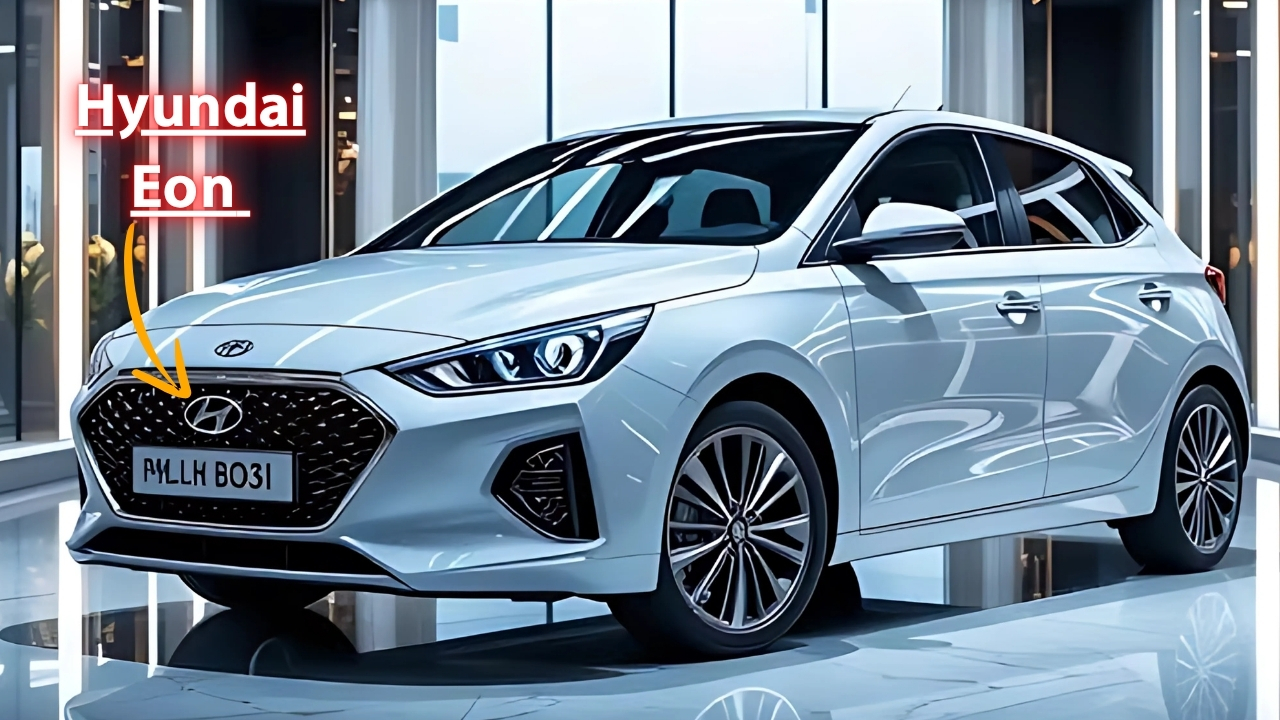Hyundai Eon : The Indian automotive market may soon witness the return of a beloved fuel-efficient compact car.
The Hyundai Eon, which established itself as an economical urban mobility solution, is reportedly preparing for a relaunch in 2025.
This comprehensive preview explores what buyers can expect from the reimagined Eon and how it might address modern transportation needs.
Legacy of Efficiency
The original Hyundai Eon earned recognition for delivering exceptional fuel economy in an affordable package.
This small car proved that basic transportation could be both economical and reliable, attracting first-time car buyers and urban families seeking low running costs.
The upcoming version is expected to build upon this foundation while incorporating contemporary updates.
The focus on mileage made the Eon particularly relevant in markets where fuel costs significantly impact household budgets.
Its lightweight construction and efficient engine created a combination that delivered impressive kilometers per liter, often exceeding owner expectations. This efficiency-first approach is likely to continue in the new model.
Expected Design Updates
The 2025 Eon will likely feature modernized styling that aligns with Hyundai’s current design language.
While maintaining compact dimensions essential for city maneuverability, expect a more sophisticated appearance with Hyundai’s signature cascading grille and updated lighting elements.
The design challenge involves creating visual appeal without adding weight or compromising aerodynamics.
The compact footprint that made the original Eon perfect for congested city streets and tight parking spaces will remain.
However, clever design updates could maximize interior space perception while maintaining the small external dimensions.
Body cladding and character lines might add visual interest to what was previously a simple, functional design.
Color options could expand beyond basic choices to include vibrant hues that appeal to younger buyers.
Two-tone paint schemes might be offered to add personality without significant cost increases.
These aesthetic improvements aim to make the Eon more emotionally appealing while preserving its practical nature.
Powertrain Evolution
The heart of the new Eon’s appeal will remain its fuel-efficient powertrain. While specific details await confirmation, expect an updated version of a small-displacement petrol engine optimized for maximum efficiency.
Advanced fuel injection technology and improved combustion chamber design could push mileage figures even higher than the original model.
The possibility of mild hybrid technology integration could further enhance fuel economy without dramatically increasing costs.
Start-stop systems, regenerative braking, and efficient alternators represent technologies that could appear in the new model.
These additions would help achieve exceptional mileage while meeting stricter emission norms.
Transmission options might include both manual and automated choices, with AMT (Automated Manual Transmission) providing affordable automatic convenience.
The focus on keeping weight low and mechanical simplicity high ensures optimal fuel efficiency across variants.
Interior Modernization
The cabin is expected to receive significant updates reflecting changed consumer expectations since the original model.
While maintaining simplicity and cost-effectiveness, the new Eon could feature improved materials, better ergonomics, and essential modern conveniences.
A digital instrument cluster and basic infotainment system would bring the interior into the contemporary era.
Space utilization remains crucial in this segment, with clever storage solutions maximizing practicality.
The seating arrangement would prioritize comfort for four adults while maintaining the possibility of accommodating a fifth passenger when needed.
Improved sound insulation could address one of the original model’s weaknesses.
Air conditioning efficiency becomes even more critical with rising temperatures, requiring systems that cool effectively without drastically impacting fuel economy.
Smart ventilation design and improved insulation could help achieve this balance.
Safety Enhancements
Modern safety requirements necessitate significant improvements over the original model.
Dual airbags, ABS with EBD, rear parking sensors, and reinforced body structure would likely be standard.
These additions address both regulatory requirements and changed consumer expectations regarding safety.
The body structure would need strengthening to meet current crash test standards while maintaining low weight for fuel efficiency. This engineering challenge requires innovative materials and design solutions.
Seat belt reminders, speed warning systems, and other mandated safety features would be seamlessly integrated.
Technology Integration
While keeping costs controlled, the new Eon must include essential technology features expected by modern buyers.
Smartphone connectivity, USB charging ports, and decent audio systems represent minimum requirements.
The challenge involves incorporating these features without significantly impacting the affordable pricing that defines this segment.
Digital displays for fuel efficiency monitoring could help drivers maximize mileage through better driving habits.
Real-time fuel consumption information and driving tips could gamify the efficiency experience, appealing to environmentally conscious buyers.
Market Positioning
The 2025 Eon would target urban buyers seeking affordable, efficient transportation in an increasingly expensive automotive market.
Rising fuel costs and environmental concerns make ultra-efficient vehicles more relevant than ever.
First-time car buyers, small families, and those seeking economical second cars represent core target segments.
The positioning emphasizes value over features, efficiency over performance, and practicality over style.
However, modern updates ensure the car doesn’t feel outdated or compromised, important for attracting younger buyers who might otherwise consider used vehicles.
Environmental Considerations
Beyond fuel efficiency, the new Eon could incorporate sustainable materials and manufacturing processes.
Recycled plastics, eco-friendly fabrics, and reduced manufacturing waste align with growing environmental consciousness.
These initiatives appeal to buyers who consider environmental impact alongside economic factors.
The exceptional mileage directly translates to lower carbon emissions per kilometer, making the Eon an environmentally responsible choice within internal combustion vehicles.
This aspect becomes increasingly important as cities implement stricter emission norms.
Hyundai Eon Conclusion
The Hyundai Eon’s planned 2025 return represents a response to market demand for affordable, ultra-efficient transportation.
By building upon its legacy of exceptional mileage while incorporating necessary modern updates, the new Eon could recapture its position as the go-to choice for economical urban mobility.
For buyers prioritizing low running costs and practical transportation, the Eon’s comeback promises an appealing option in an increasingly expensive automotive landscape.

